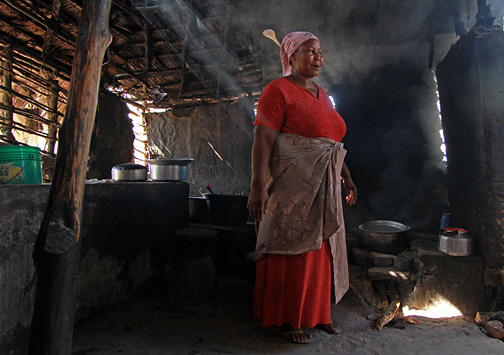-
We’re At Peak Storytelling – And That’s a Good Thing
May 23, 2016 By Sean PeoplesEverywhere you look these days, you find storytellers. I’ve found myself going to fewer concerts after work and more storytelling nights. Podcasts have sprung up dedicated to the craft of narrative. It’s a brand I hear friends use to define themselves: “I’m a storyteller.” If you’re under 30, it’s a natural and ubiquitous part of the milieu.
I feel it. We’re at Peak Storytelling.
Telling stories isn’t new; the meta-ness of it is though. Journalists are natural storytellers. But years of gutted newsrooms – especially on the environmental beat – have helped create a gaping hole in our insatiable appetites for content.
Cue the rise of personal blogs, the everyday storyteller, the foundation, and the NGO all getting into the mix! Cue also the growing marketplace of videos, podcasts, and content all claiming to be story-centric. If you’re not in the business of storytelling now, you will be soon.
But I’m not here to bash it. Storytelling is a crucial ingredient to making sense of a complex world. At their best, stories help people understand faraway people and seemingly byzantine situations, going beyond statistics and generalizations. I believe there’s an opportunity to celebrate its pervasiveness and indeed encourage it – especially in the sometimes insular world of Washington, DC, and other policymaking centers.
Building Empathy
The beauty of storytelling is its ability to start conversations. I find this especially true of film. Through context and characters they can see and hear, audiences are briefly transported to another place. Film has the power to bring stories to life in a way that is completely real and relatable.
Most importantly, I believe stories have the power to build empathy.
Over the last 10 years, I witnessed this empathy grow among audiences firsthand as a fledgling producer and filmmaker. Prior to having any interest in film, I had a passion for conservation, sustainability, and the process of policymaking. Marrying these interests would become my focus as I saw how they could create an understanding of complexity and nuance where there was confusion before.
I saw how much there is to learn from the subjects of my films themselvesYet, envisioning a film that is a powerful communication tool is one thing; creating it is another. Telling stories and keeping people’s attention is a craft. There’s always that person in your family who can do it better than the rest. They engage you with humor, philosophy, reveals, and denouements – components of a good tale you don’t necessarily think about until you look under the hood and break it down.
My first foray in this world was a trip to Ethiopia. I took a camera and a tripod to a country I had never visited before. I thought I’d talk to some people, film some B-roll, then edit it all together. Poof, a film!
Rookie mistake. It took me nearly six months to make any sense of the footage I brought back or string together a cohesive narrative from the interviews I conducted. Months wore on and I had to produce something. What I ended up with wasn’t the film I envisioned and it didn’t have the compelling narrative to be effective.
The experience left me yearning for another shot. I knew I was making mistakes that could be fixed. I needed help and I wanted to keep trying.
Over the next few years, I began to ask for it. I learned of the beauty of pre-production, casting, and having a working script before you get on the plane. My colleagues at Think Out Loud Productions collaborated with me often, helping to convey the importance of building a good story with beautiful imagery.
Ultimately, though, I saw how much there is to learn from listening to the subjects of my films themselves. In Nepal, Tanzania, India, and then back to Ethiopia one more time, I realized the real power of stories is how they connect us all. Whether it was on the side of a steep mountain, along the Indian Ocean, or among bustling coal fields, once everyone forgot about the cameras – not always an easy task, mind you – our conversations led to greater empathy, knowledge, and connection with one another.
Film became something new for me. Speaking to people in these remote areas led to insights and context I felt needed to be shared. Rukia, a Tanzanian mother and business owner who spoke powerfully of the need to focus on both health and environmental interventions in small villages like hers. Desawork, a teenager from Ethiopia who doesn’t think twice about talking to her parents about family planning, conservation, and her country’s future. And Helpme, a brave journalist covering the frontlines of India’s destructive coal industry.
Filmmaking became about authentically representing these characters, their context, and their stories.
Policy and Power
Through film, we have the ability to show rather than tell. This is crucial. Sometimes you can build empathy and context much better by simply showing someone in their home, or toiling at work, or participating in local government than writing about it.
Empathy is the extra ingredient needed, and storytelling can provide itWe have so much to learn from communities on the frontlines of climatic shifts, dwindling natural resources, and global development. Rukia, Desawork, Helpme, and others like them can be the catalyst for understanding how real people are dealing with huge changes.
When I screen one of my films for new audiences, I see people think about something for the first time, often because they’re seeing (and hearing) it for the first time. All of a sudden, the people and society of Tanzania are entirely distinct from Ethiopia. People have a new audio-visual frame of reference.
The power of film narrative to bring people together and learn about characters and subjects they may not have thought about is real. Discussions after these films are richer and longer than if I had shared a few pictures and a PowerPoint presentation. The complexity of the topics is grasped a little better as well. Through story, you’re able to engage people on a visceral level and broaden the discussion by creating a communication tool that brings new voices to the table.
Here in Washington, DC, capital of the most powerful country in history, this is incredibly valuable. Without authentic representations of how we live our lives, government policies intended to help often fall short. They fall back on old ideas that are not well suited to today’s problems, or treat everyone as if they’re the same. Policymaking cannot only be a process of numbers and funding cycles. These tools alone are insufficient at tackling the challenges faced by communities here and abroad. Empathy is the extra ingredient needed, and storytelling can provide it.
Sean Peoples is a multimedia producer for Think Out Loud Productions consulting with the Environmental Change and Security Program. He worked at the Wilson Center from 2006 to 2015, producing the short films, ‘Paving the Way,’ ‘Scaling the Mountain,’ ‘Broken Landscape,’ and ‘Healthy People, Healthy Environment.’
Photo Credit: Used with permission courtesy of Sean Peoples/Think Out Loud Productions.
 A Publication of the Stimson Center.
A Publication of the Stimson Center.









